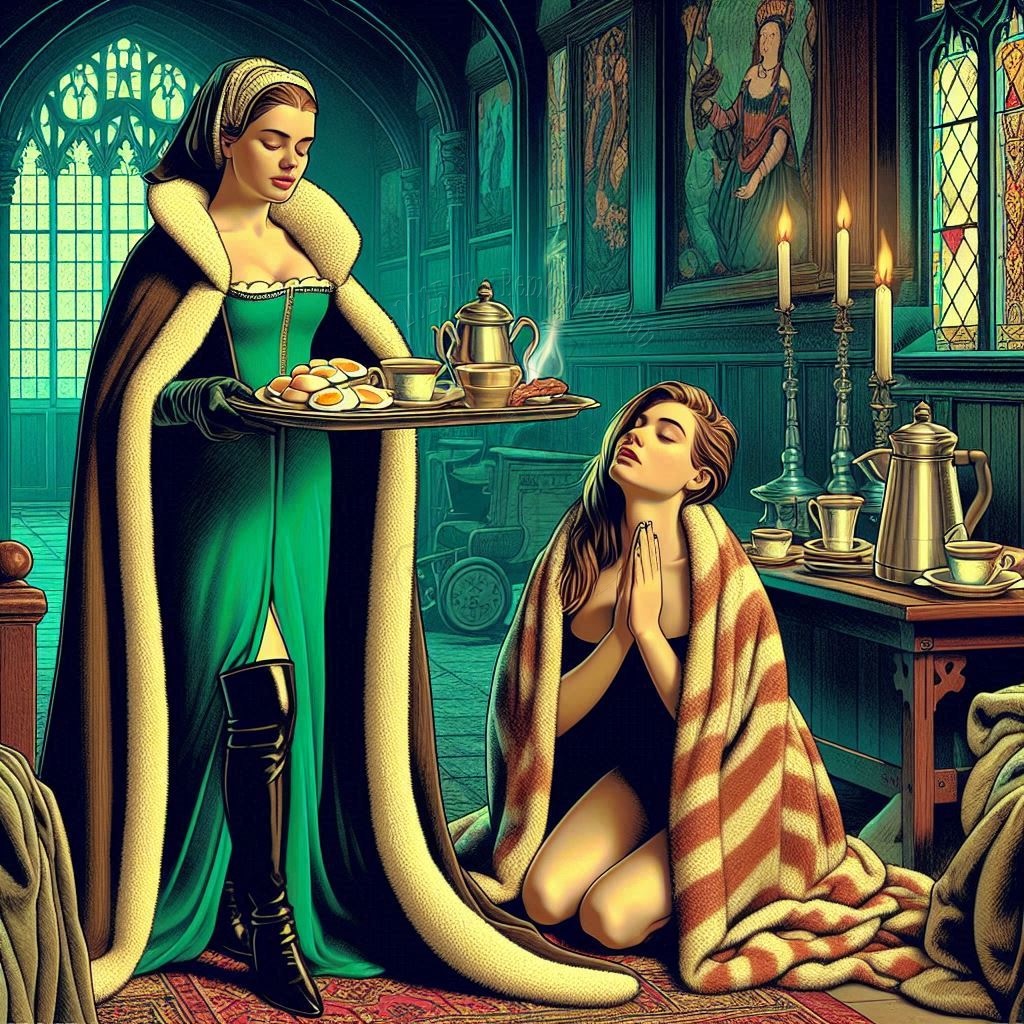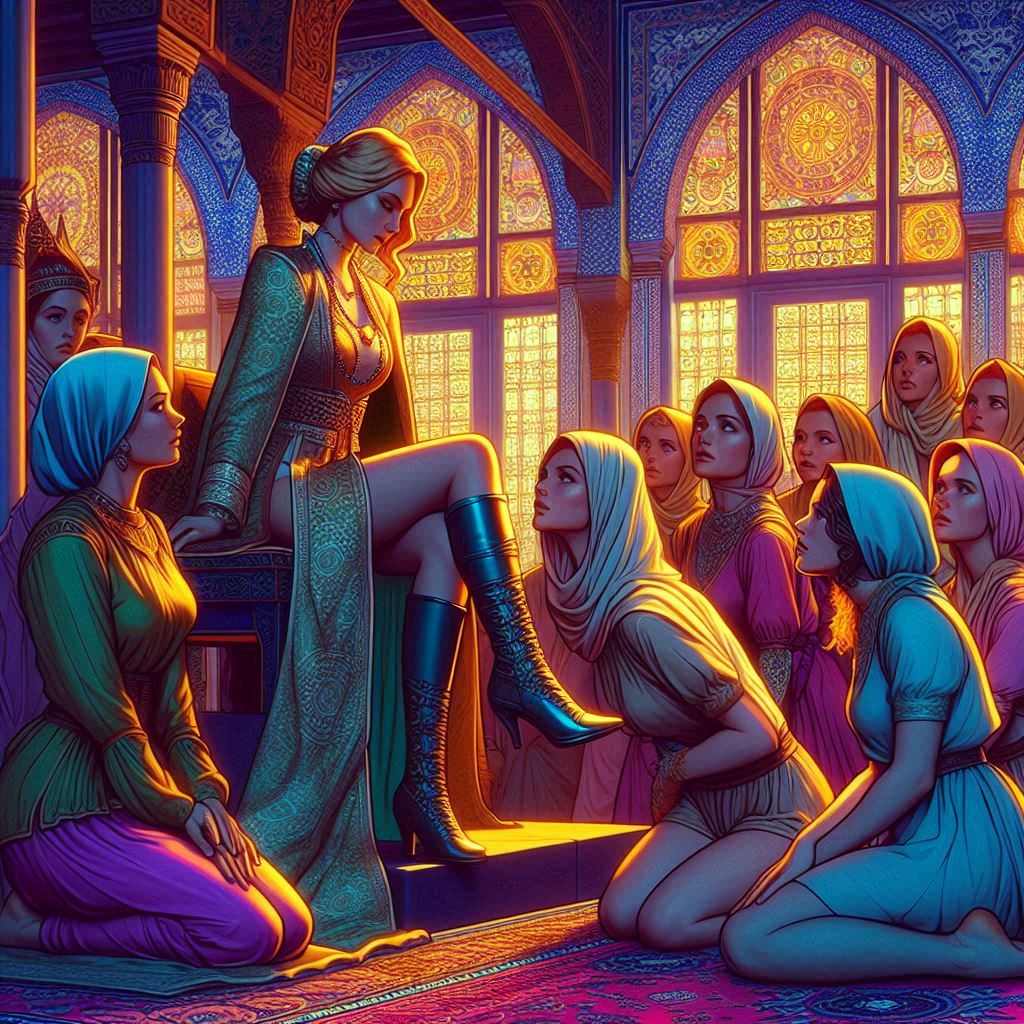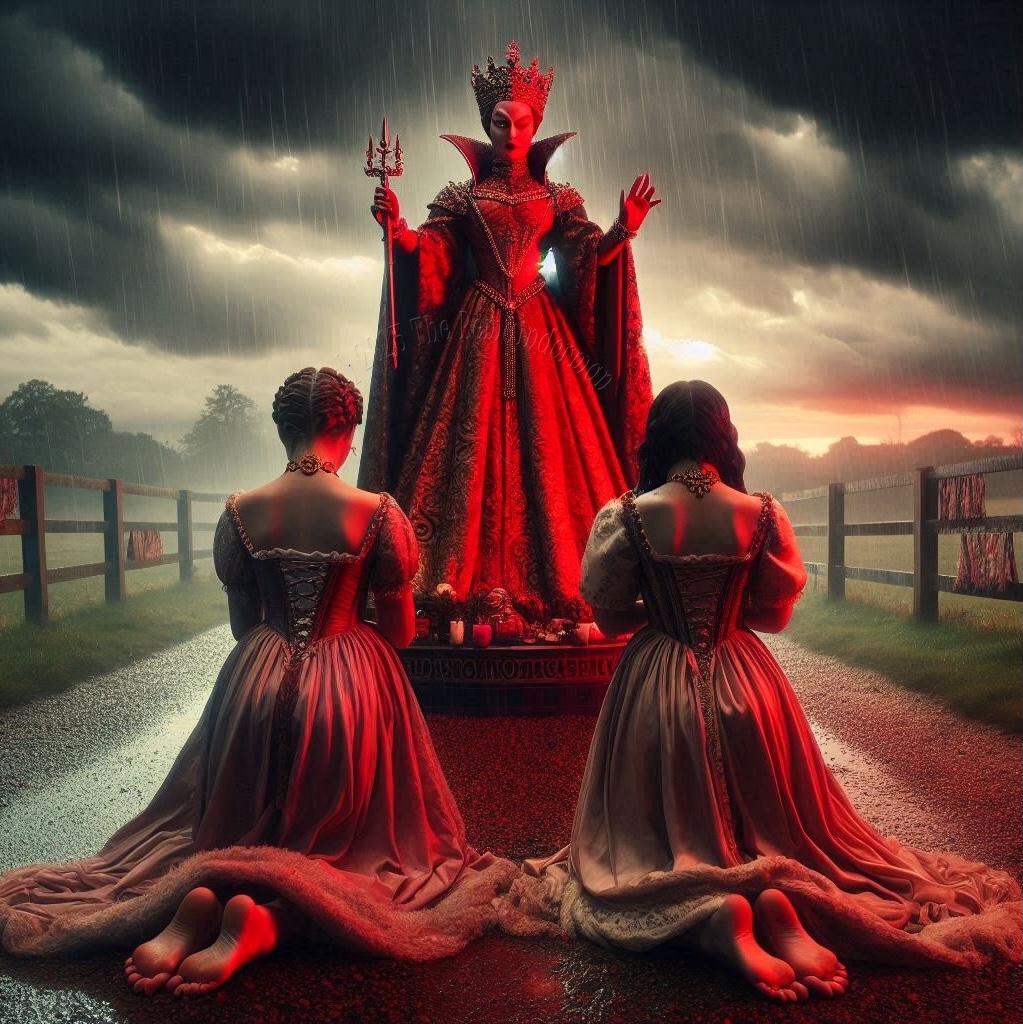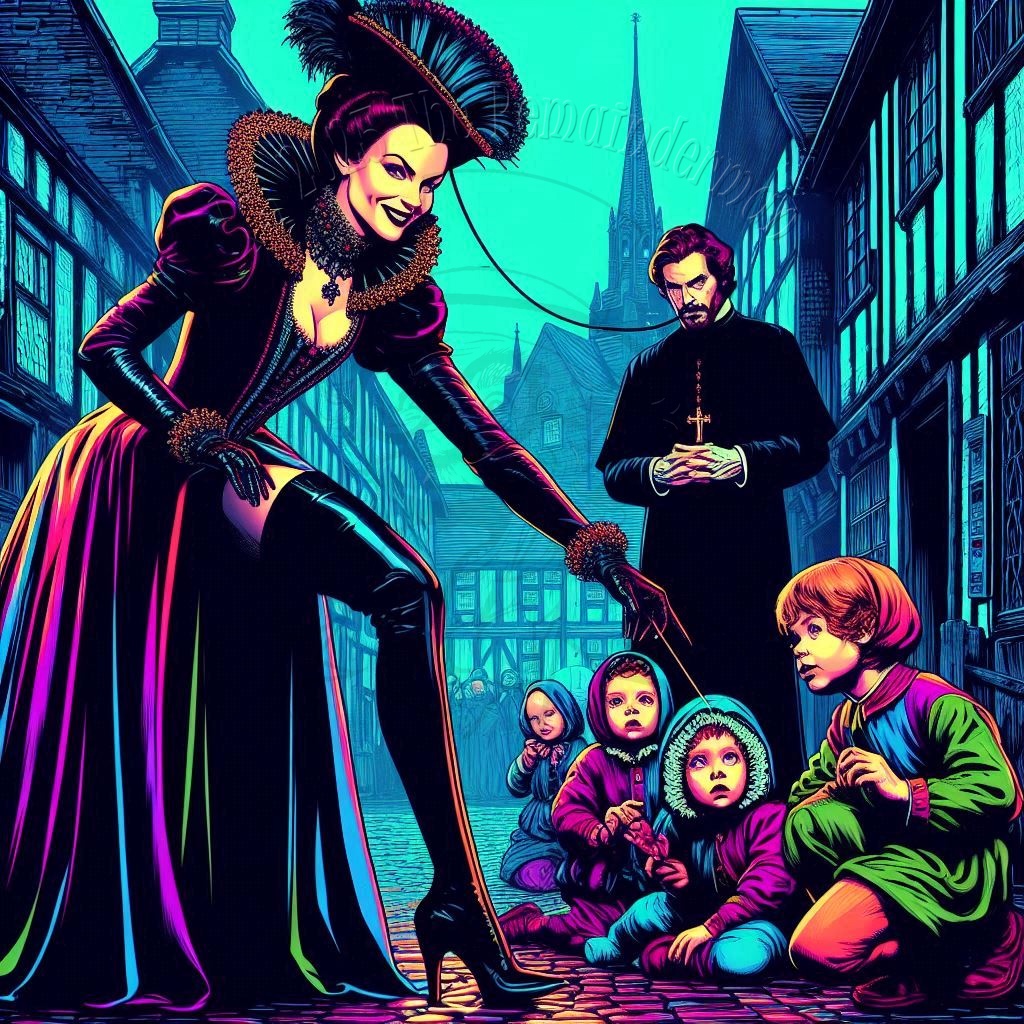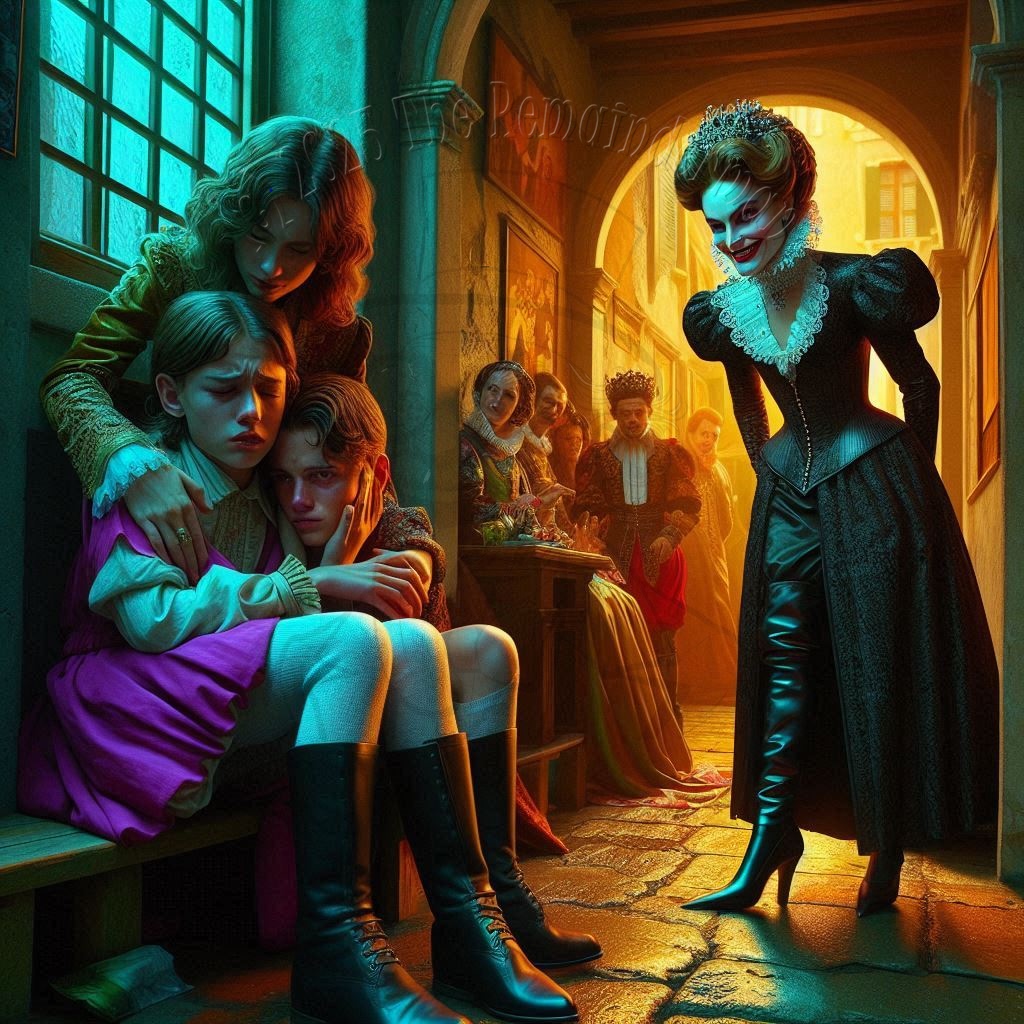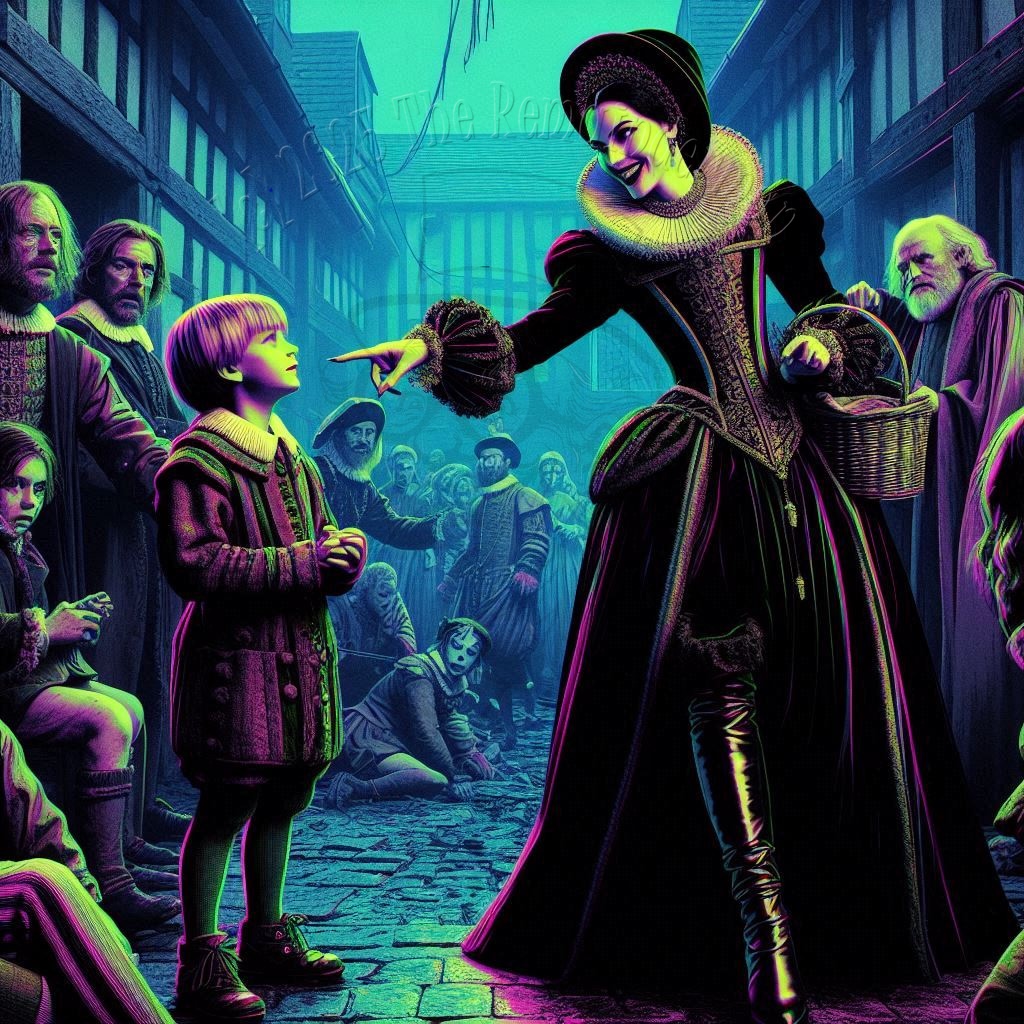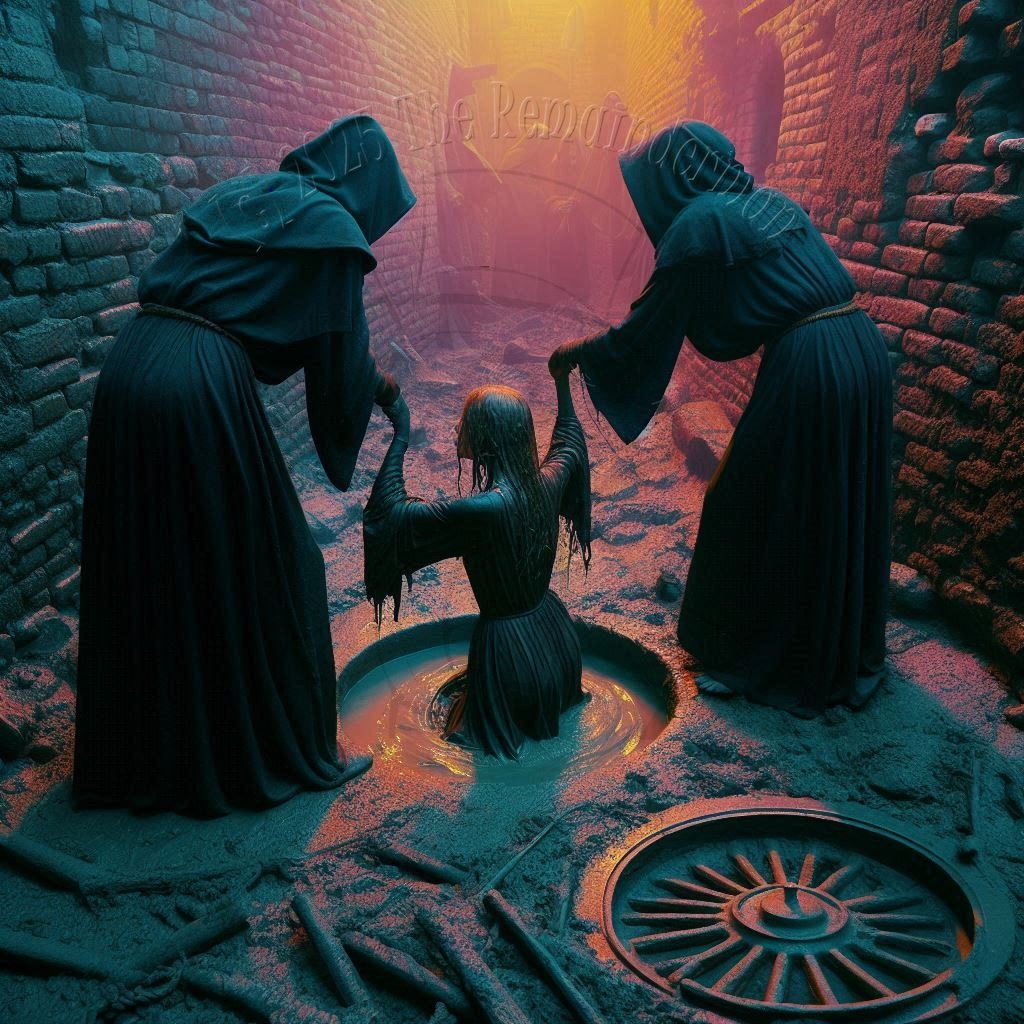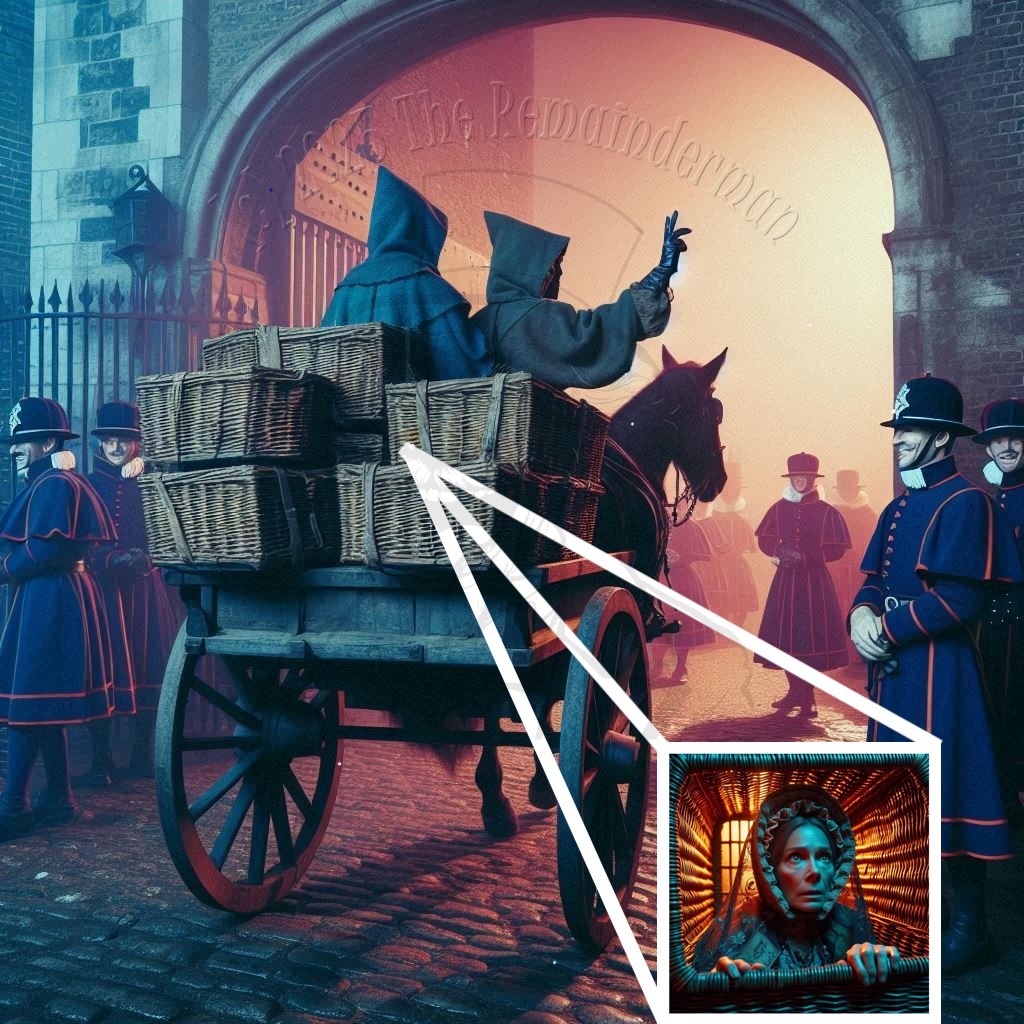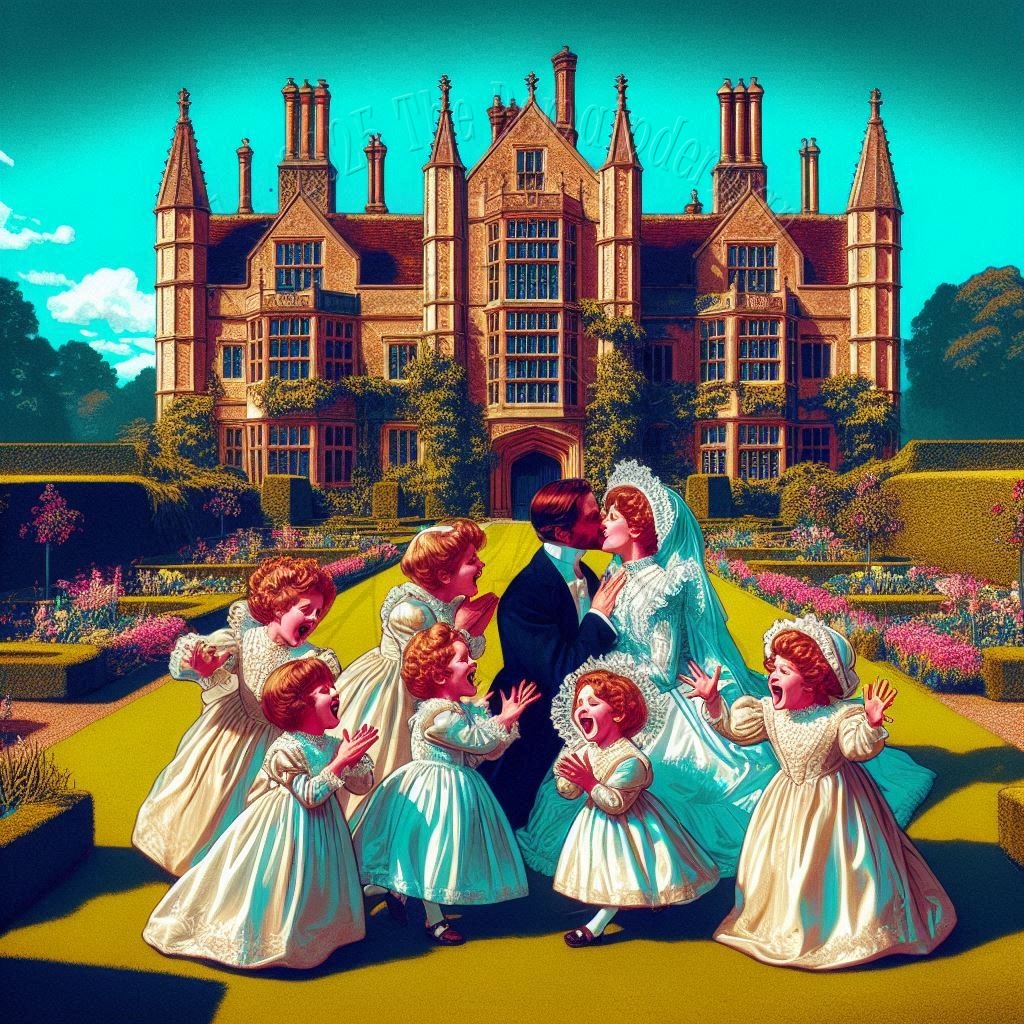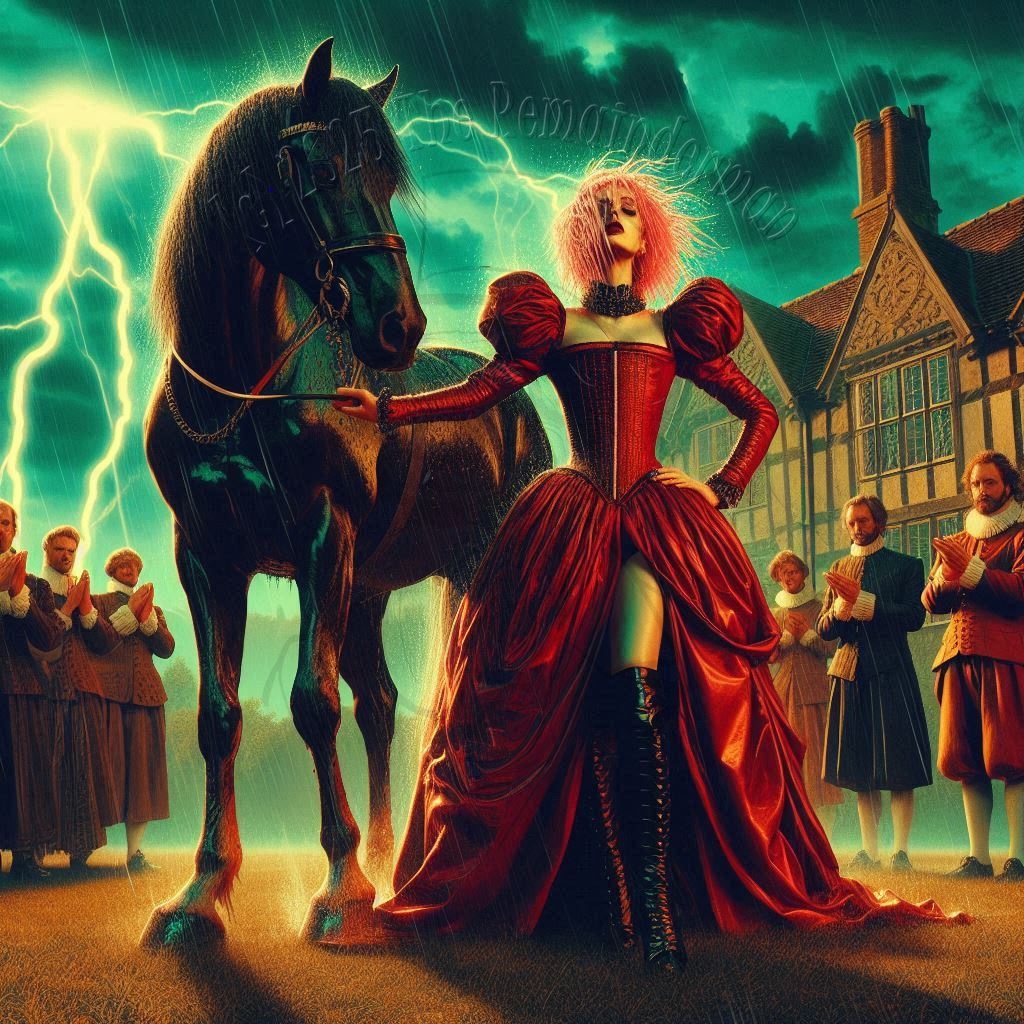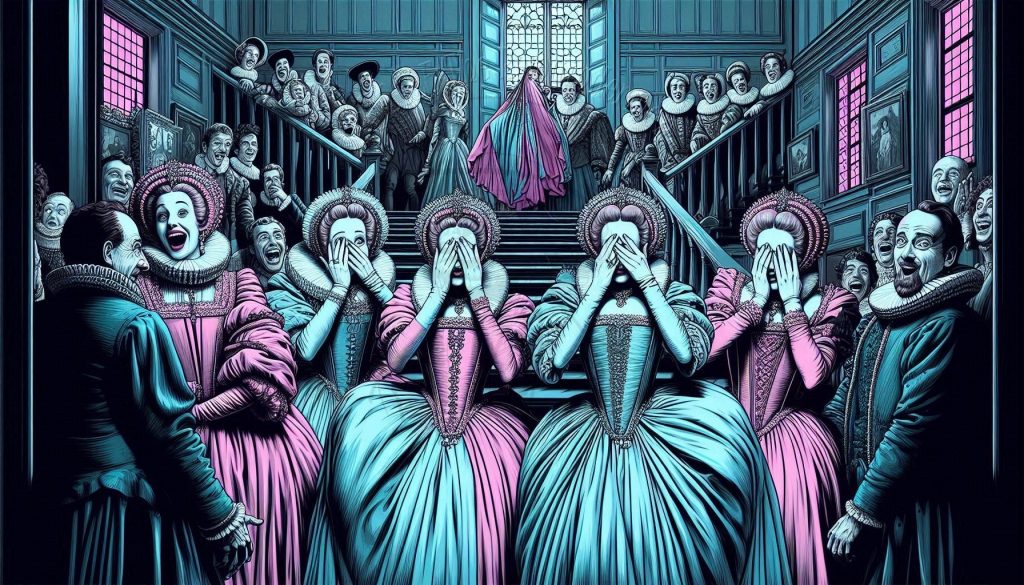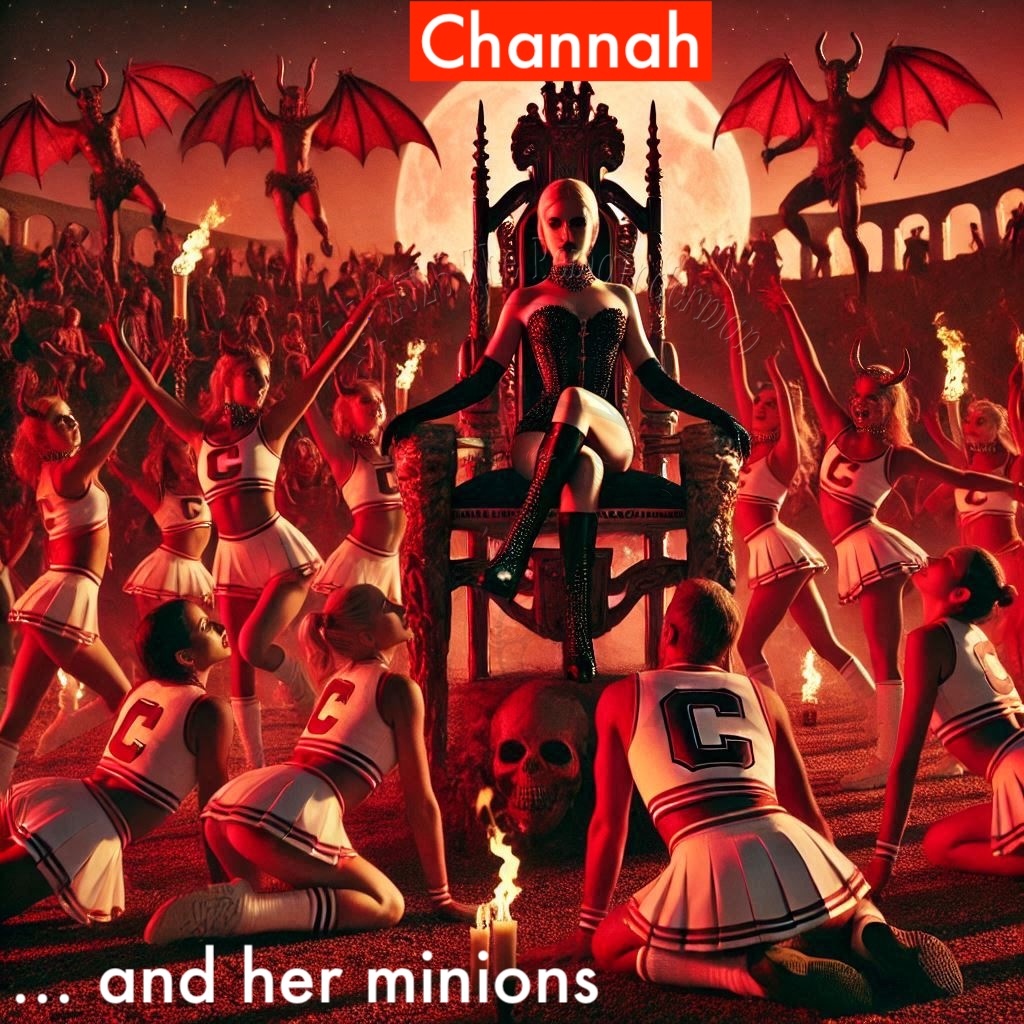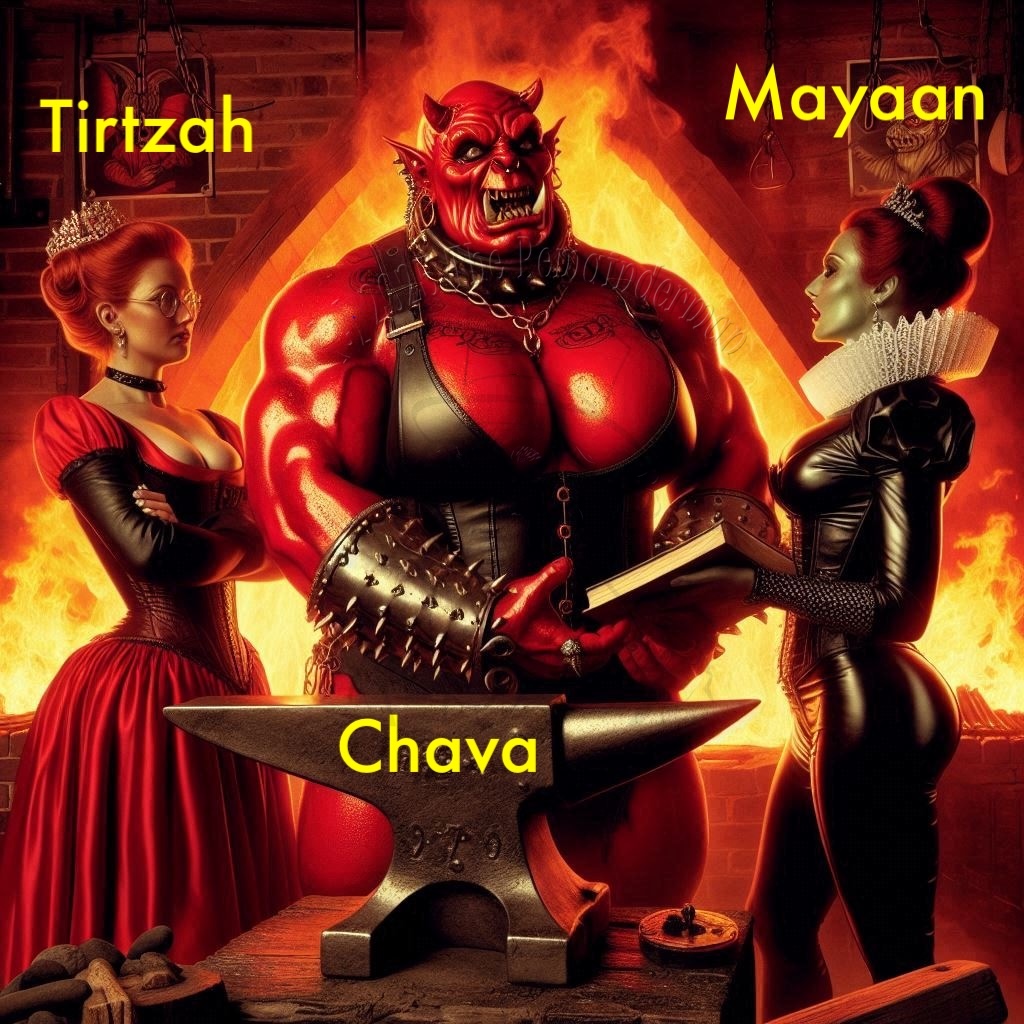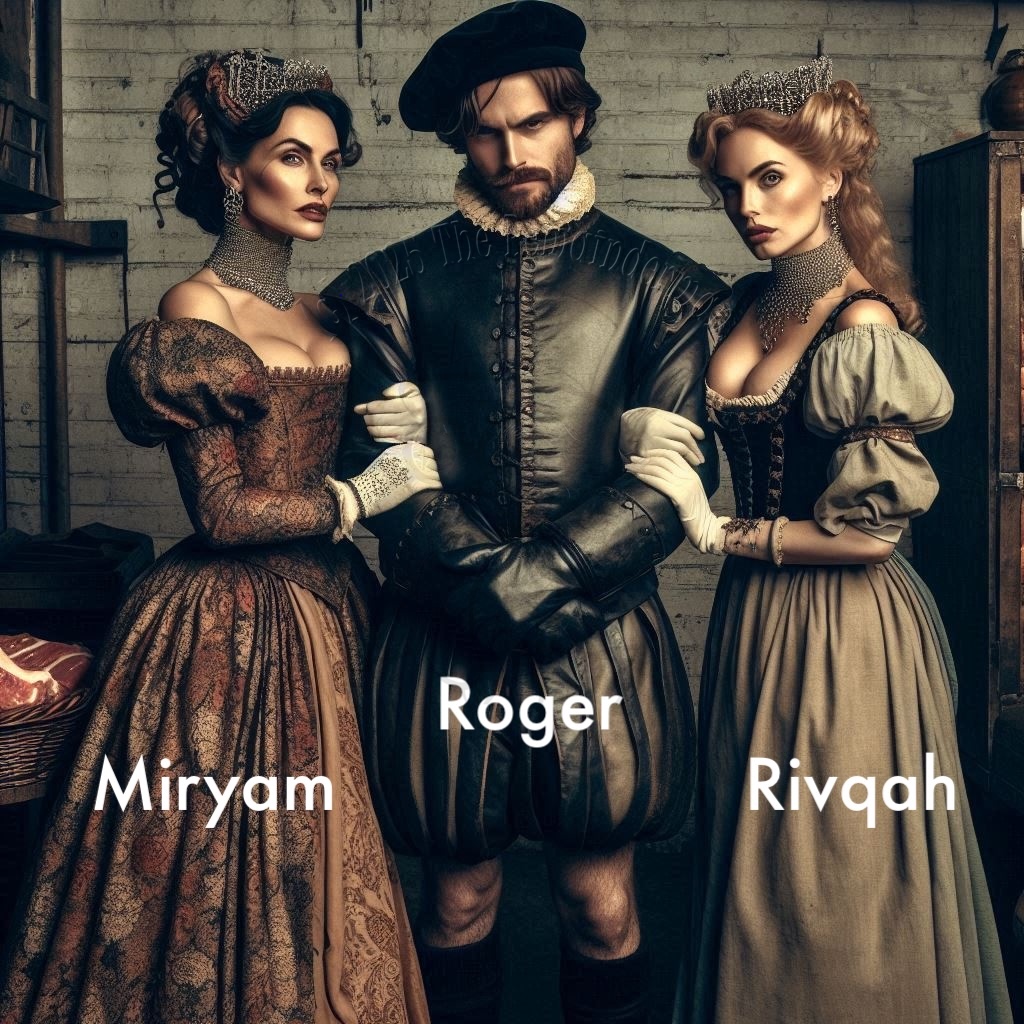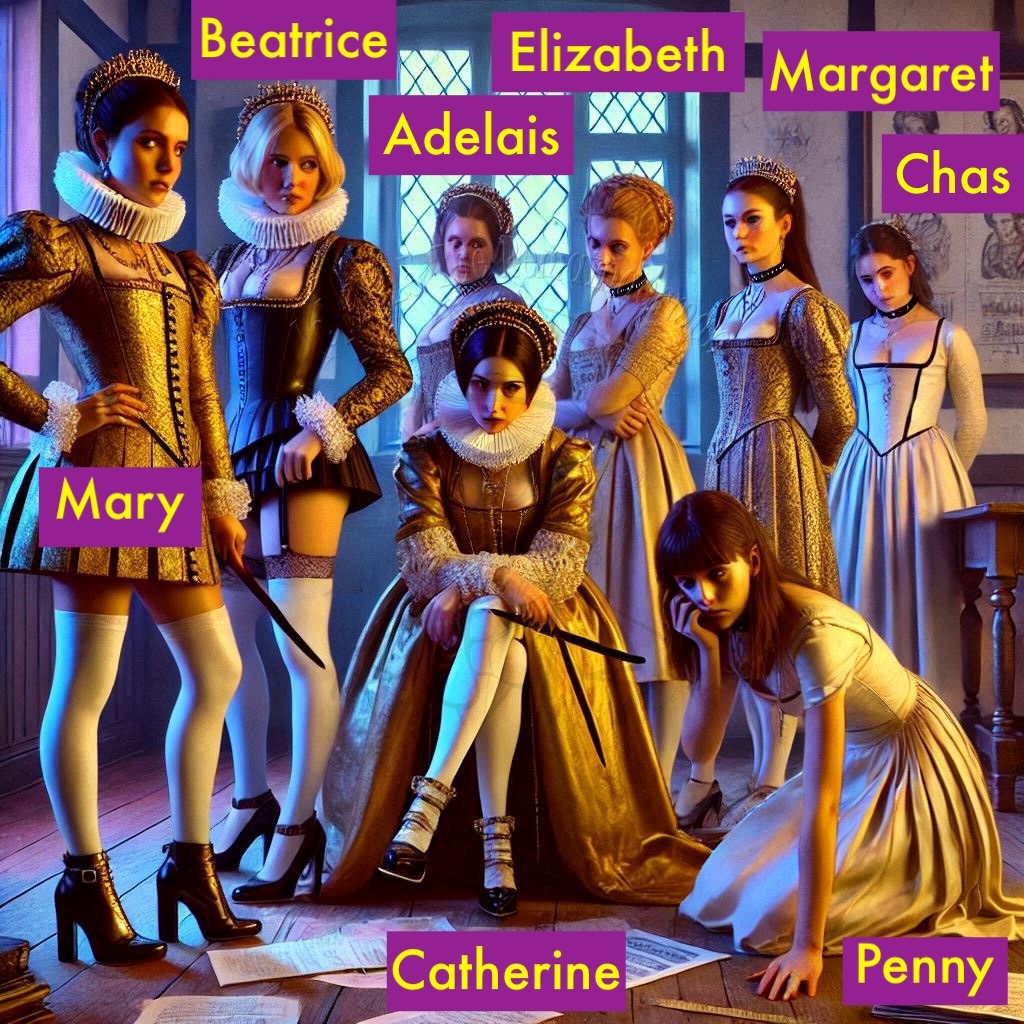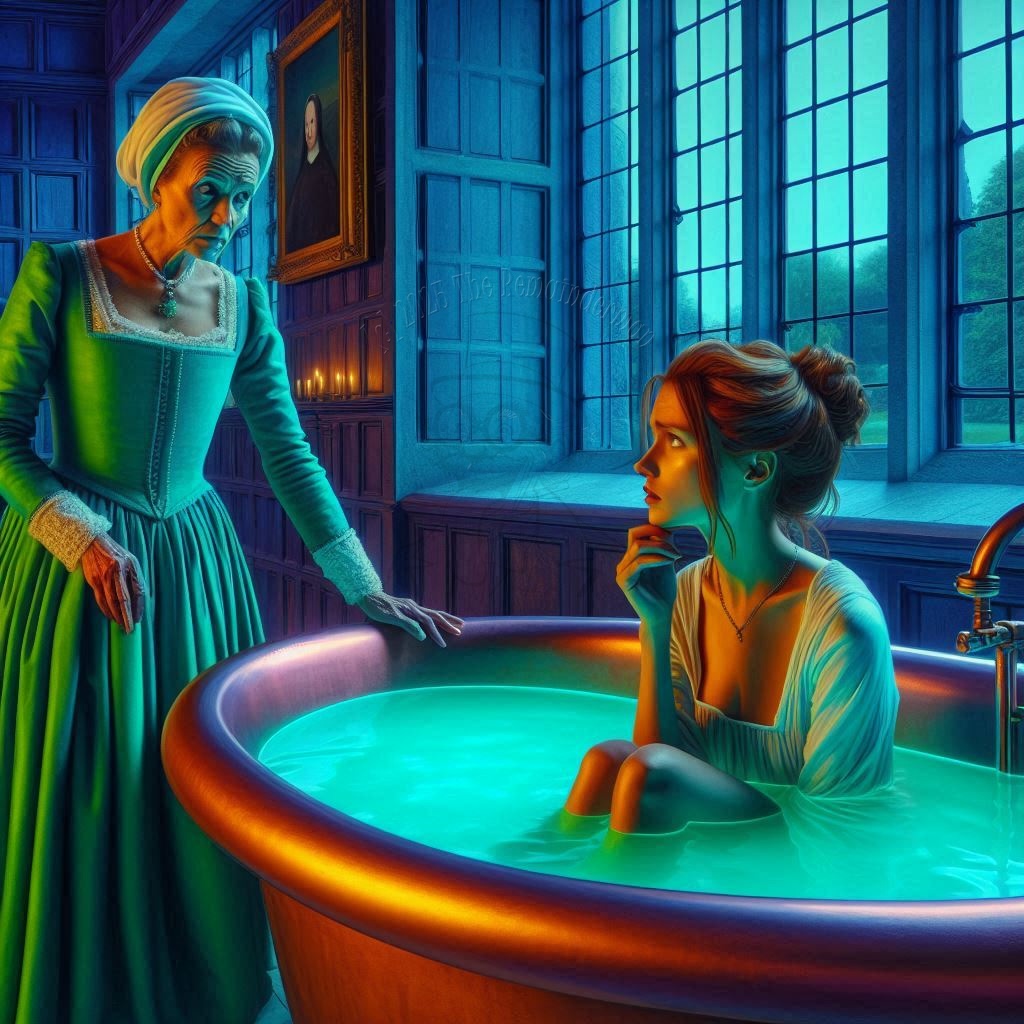


EXPLICIT VERSION AVAILABLE AT https://patreon.com/TheRemainderman
continued from 06-45
Bathing
Sindonie led Chas and Penny to the hidden doorway between the private chapel and the second step of the family’s private staircase, allowing them to return from the chapel to the Queen’s private quarters without going through any public spaces. They did have to pause while Sindonie peered through a peephole to make sure no one was in the Great Chamber, and wait while Sindonie stepped through confirming visually and audially that the coast was clear, before she ushered them swiftly across the Great Chamber to the Privy Chamber of the Countess, shooing them into the garderobe while she made sure the human servants had prepared the baths properly and escorted them out of the Privy Chamber. Finally, she summoned them from their end of the garderobe, right next to the door, where they had huddled to stay as far away from the creepy Earl as possible. These days, the Earl spent most of his time chained to the privy hole at the other end of the garderobe, avoided by everyone who could avoid him; and the garderobe windows were kept open whenever the weather permitted to keep it smelling fresh. The Countess’s clothing was neatly arranged on racks and cabinets in her Privy Chamber so she could avoid the garderobe, and its smell, entirely.
The bathroom—very specifically, a room holding two bathtubs, a water furnace, and pipes for filling and draining the bathtubs—was the only one of its kind for leagues in any direction. Certainly, some of the King’s palaces had similar facilities; but they were rare, in the extreme, reserved only for the wealthiest and highest-ranked, like the Defalaises.
The girls sank into their baths, contriving to keep their blankets between them and their governess until they were in the water, sighing contentedly. Truly, the baths were a rare and precious luxury the girls had not known until moving to Fensmere; and quite rarely before they turned 18. They were only allowed to use the baths—and in fact, required to do so—now that they were adults because of their marriage to the Queen, who required her servants to be squeaky-clean and fresh. So it was typical enough that Chas was splashing and soaking merrily the moment he settled in; but it highlighted that Penny seemed uncharacteristically subdued and distant.
Sindonie frowned questioningly. “Is everything all right, Penny?”
Penny glanced back at her, surprised and maybe a little embarrassed she hadn’t been aware her mood was so obvious. “Yes, thank you, Mistress. I think—I don’t remember it very well, but I think I remembered…. A nightmare—something about a bathtub, I can’t quite—”
“You certainly did.”
“I did?” she looked startled Sindonie would know.
“Yes, the men were talking about it. Apparently you both kept sleeping, but your cries eventually became so loud, and your movements so violent, they spread to Chas and the two of you woke up the men. It started early this morning. Fortunately, Obedience was still in the room and scurried them out without waking you.”
The girls exchanged a wondering look. “I can’t really… remember it exactly, only I’m sure I was in a tub, like this one…” she idly stirred the warm water back and forth, enjoying the way it felt running through her hands. “But I could swear—it seemed really important I remember.”
“Obedience told the men it was the spiked wine, and that it had an especially strong effect on you because you were unused to wine. Especially not Succubaean Hippocras.”
“What’s ‘Hippocras’?”
“Spiced wine. Or in the case of the succubus, liberally spiced and spiked. It’s a wonder you slept as well and as long as you did.” Her face softened. “But I’m sure you girls were exhausted.” They nodded their agreement. “Well, of course your main duty on your honeymoon will be to make sure your Domina is happy, but hopefully you will have some more opportunities for rest.”
“I’ll give you a few minutes to wash,” she told them. “And when I come back, you’re to be dried and sitting right here,” she patted a bench facing two large mirrors on the wall.
“May we get dressed first, Mistress?” Penny asked.
“Nope,” she smiled impishly. “But there’s a reason for that. Cover yourselves with the clean towels next to your baths. Do not touch those filthy blankets again.”
“Yes, Mistress,” they chorused, looking at one another curiously.
Skin Care
“Wait. Two more things. First, because your collars are ensorcelled, they won’t be affected by water. They won’t absorb it, let alone be damaged by it. So you can dip your heads underwater and should do so. Second,” She pointed to a pot of lotion made with sesame seed oil, beeswax, and honey. “I’ll give you a few extra minutes to care for your skin. Be careful to get it everywhere. You want your skin to be soft and smooth for your Domina. Everywhere,” she emphasized mischievously, imagining their reactions, as she turned and walked out, hearing them starting to speculate about what was going on as she closed the door.
When she returned, she found them sitting on the bench, each with one towel wrapped around their long hair, a second tucked under their arms, and a third around their waists. Although as she entered, she caught a flicker of movement from their waists and guilty expressions on their faces.
She frowned at them, putting her hands on her hips, watching them turn redder but not volunteer anything, until she figured it out and her face turned sympathetic. “Oh. You girls haven’t even had a chance to talk about—” she gestured “—anything that has happened to you, have you?”
They hesitantly shook their heads, as she walked around behind them, making a tisking sound, and running a finger along the top of each of their backs, above the towels. “Dry as a bone. Why didn’t you help one another?”
She met their eyes in the mirrors, seeing the dismay and consternation about what to say etched on their faces, pressing her lips together to avoid smiling too obviously. Then she gave up and laughed. “We’re all girls here,” she insisted. “There’s no reason for modesty. And by the way.” She moved up behind both of them, her hips and breasts pressing against them, resting her hands on their shoulders. “I may not be your valide anymore, but I will always outrank you. And now that you’re adults…” she ran a fingernail along each girl’s collarbone, laughing harder as they gasped, pulled away, and protested:
“Mistress Sindonie!”
She clamped her hands on their shoulders, holding them still, to finish her sentence. “I have the same privilege as any of your other superiors, jawari. Do you understand?”
“Yes, Mistress,” they acknowledged, tight as drums.
“Oh, relax, dearies,” she rolled her eyes, patting their shoulders and moving off them. “My point is, next time you’re feeling squeamish about touching one another… think again.” She sat down on a cushioned chair nearby and crossed her legs, raising her eyebrows expectantly. “Go on. Do now, in front of me, what you were too silly to do when you had your privacy.”
They swallowed and moved with extreme awkwardness and embarrassment as she enjoyed herself, not particularly interested in them sexually—such a thing wouldn’t even have been likely to cross her mind if their own reticence hadn’t caused such a scene—but mightily amused as they tried to hold their own towels in place while rubbing lotion onto one another’s backs.
Finally, covering themselves as best they could, they reluctantly turned to meet her eyes, hoping to meet with her approval. She shook her head and stared pointedly. “Did you use it everywhere?” “Ohmygod!” Penny burst out, squeaking and covering her mouth with shock at her own sacrilegious outburst.
CHAPTER SIX PART 46: “LE SACCAGE DE LA SALE BÊTE ROUGE (RAMPAGE OF THE DIRTY RED BEAST)”
2025-03-30 Literature Section “06-46[X] Hella Honeymoon III”—Abridged 1305 words::Explicit 1332 words—©2025 The Remainderman. This is a work of fiction, not a book of suggestions. It’s filled with fantasies, idiots, and criminals. Don’t believe them or imitate them.



